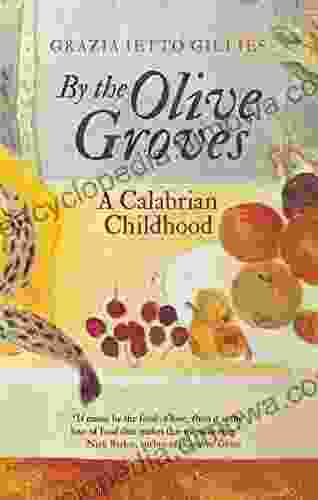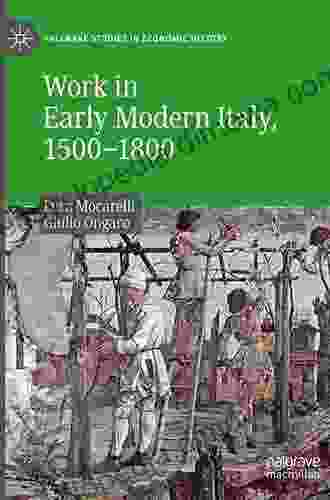Discover the Lost History of Seneca Village: A Journey Through Memory and Resilience


Prologue: A Tale of Displacement and Forgotten Legacies
Nestled in the heart of Manhattan, just north of Central Park, lay a thriving African American community known as Seneca Village. Founded in the 1820s, this historic settlement became a sanctuary for free and enslaved Black people seeking refuge from discrimination and oppression. For decades, Seneca Village flourished, boasting homes, farms, churches, and schools, but its existence was tragically cut short. In the 1850s, the relentless expansion of New York City forced the village's residents to relocate, and Seneca Village was erased from the city's memory.
Chapter 1: From Humble Beginnings to a Thriving Community
The story of Seneca Village begins with the arrival of free and enslaved African Americans to the outskirts of Manhattan. Facing prejudice and discrimination throughout the city, they sought refuge in the undeveloped land north of Central Park. In the 1820s, under the leadership of a former slave named John Peterson, they established a small settlement that would come to be known as Seneca Village.
4.5 out of 5
| Language | : | English |
| File size | : | 853 KB |
| Text-to-Speech | : | Enabled |
| Screen Reader | : | Supported |
| Enhanced typesetting | : | Enabled |
| Word Wise | : | Enabled |
| Print length | : | 104 pages |
| Lending | : | Enabled |
Over time, Seneca Village grew and prospered. Its residents established farms and gardens, providing sustenance for their community. They built homes, churches, and schools, creating a sense of belonging and self-reliance. Seneca Village became a sanctuary for Black New Yorkers, a place where they could live and thrive despite the challenges they faced.
Chapter 2: The Resilience of a People in the Face of Adversity
The residents of Seneca Village faced numerous obstacles throughout their time in the settlement. They were subject to prejudice and discrimination from neighboring white communities, and their land was constantly under threat of seizure. However, they persevered, demonstrating incredible resilience and determination.
One of the most significant challenges faced by the community was the lack of legal recognition. Seneca Village was located on land that was not officially recognized by the city, making it vulnerable to eviction. Despite this, the residents refused to give up their homes and fought for their rights. They organized protests, petitioned the government, and even took legal action to protect their community.
Chapter 3: The Destruction of Seneca Village and Its Legacy
In the 1850s, the relentless expansion of New York City reached Seneca Village. The city government planned to build a new park, Central Park, and Seneca Village was located in its path. Despite the protests of the residents, the city forced them to relocate and demolished their homes and businesses.
The destruction of Seneca Village was a devastating blow to its residents, but their legacy lived on. The community's resilience and determination inspired future generations of Black New Yorkers. It became a symbol of the struggles and triumphs of African Americans in the city.
Chapter 4: Rediscovering Seneca Village: Reclaiming Lost Histories
For over a century, the story of Seneca Village was largely forgotten. The site of the former settlement was covered by Central Park, and the memories of its residents faded away. However, in recent years, there has been a renewed interest in the history of Seneca Village.
Archaeologists, historians, and community activists have worked together to uncover the buried history of Seneca Village. Excavations have revealed the foundations of homes, churches, and other buildings, providing a glimpse into the lives of its former residents. Oral histories and historical documents have also shed light on the community's struggles and achievements.
Epilogue: Seneca Village: A Reminder of Resilience and the Importance of Memory
The history of Seneca Village is a powerful reminder of the resilience and determination of African Americans in the face of adversity. It is also a reminder of the importance of memory and the need to preserve the stories of those who have been marginalized.
Today, the legacy of Seneca Village lives on in the hearts and minds of New Yorkers. A memorial park on the site of the former settlement honors the memory of its residents and their contributions to the city. The story of Seneca Village continues to inspire and empower African Americans and all who believe in the power of resilience and the importance of preserving history.
4.5 out of 5
| Language | : | English |
| File size | : | 853 KB |
| Text-to-Speech | : | Enabled |
| Screen Reader | : | Supported |
| Enhanced typesetting | : | Enabled |
| Word Wise | : | Enabled |
| Print length | : | 104 pages |
| Lending | : | Enabled |
Do you want to contribute by writing guest posts on this blog?
Please contact us and send us a resume of previous articles that you have written.
 Book
Book Novel
Novel Page
Page Chapter
Chapter Text
Text Story
Story Genre
Genre Reader
Reader Library
Library Paperback
Paperback E-book
E-book Magazine
Magazine Newspaper
Newspaper Paragraph
Paragraph Sentence
Sentence Bookmark
Bookmark Shelf
Shelf Glossary
Glossary Bibliography
Bibliography Foreword
Foreword Preface
Preface Synopsis
Synopsis Annotation
Annotation Footnote
Footnote Manuscript
Manuscript Scroll
Scroll Codex
Codex Tome
Tome Bestseller
Bestseller Classics
Classics Library card
Library card Narrative
Narrative Biography
Biography Autobiography
Autobiography Memoir
Memoir Reference
Reference Encyclopedia
Encyclopedia Isabel Allende
Isabel Allende 51 Amazing Things
51 Amazing Things Shirley Reva Vernick
Shirley Reva Vernick Tony Crilly
Tony Crilly Joan Kane Nichols
Joan Kane Nichols A J Forrest
A J Forrest A K Sprutey
A K Sprutey Will Adams
Will Adams Sophia Stafford
Sophia Stafford Yvette Luciano
Yvette Luciano Randy Wilson
Randy Wilson Patty Tomsky
Patty Tomsky Passport To European Travel Guides
Passport To European Travel Guides Erick Prato
Erick Prato Lewis Smile
Lewis Smile A J Warren
A J Warren Ravens Dagger
Ravens Dagger Samantha Key
Samantha Key Barry Williams
Barry Williams Kerry Atkinson
Kerry Atkinson
Light bulbAdvertise smarter! Our strategic ad space ensures maximum exposure. Reserve your spot today!

 Douglas AdamsWittgenstein On Mathematics: Illuminating the Nexus of Language, Logic, and...
Douglas AdamsWittgenstein On Mathematics: Illuminating the Nexus of Language, Logic, and...
 Cortez ReedBy the Olive Groves: Calabrian Childhood - A Literary Journey to the Heart of...
Cortez ReedBy the Olive Groves: Calabrian Childhood - A Literary Journey to the Heart of... Edward BellFollow ·17.3k
Edward BellFollow ·17.3k Javier BellFollow ·7.4k
Javier BellFollow ·7.4k Billy FosterFollow ·18.5k
Billy FosterFollow ·18.5k Robert ReedFollow ·10.6k
Robert ReedFollow ·10.6k Chuck MitchellFollow ·13.7k
Chuck MitchellFollow ·13.7k George HayesFollow ·14.5k
George HayesFollow ·14.5k Dawson ReedFollow ·11.4k
Dawson ReedFollow ·11.4k Ted SimmonsFollow ·2.2k
Ted SimmonsFollow ·2.2k

 Zadie Smith
Zadie SmithWork in Early Modern Italy 1500-1800: A Captivating...
: Unraveling the Enigmatic...

 Noah Blair
Noah BlairIceland's Most Unusual Museums: A Quirky Guide to the...
Iceland is a land of natural wonders, from...

 Ross Nelson
Ross NelsonShutterSpeed - A Photographic Voyage
Embark on an Unforgettable Photographic...

 Wayne Carter
Wayne CarterUnveiling the Secrets: Detailed Streamside Field Guide to...
Embark on an unforgettable fly fishing...

 Patrick Rothfuss
Patrick RothfussHannah Montana: Reality Check Junior Novel 19
The Ultimate Behind-the-Scenes Adventure for...

 Chad Price
Chad PriceCreate More Than 30 Projects from Vintage Pieces: Unleash...
Embrace the Art of...
4.5 out of 5
| Language | : | English |
| File size | : | 853 KB |
| Text-to-Speech | : | Enabled |
| Screen Reader | : | Supported |
| Enhanced typesetting | : | Enabled |
| Word Wise | : | Enabled |
| Print length | : | 104 pages |
| Lending | : | Enabled |








